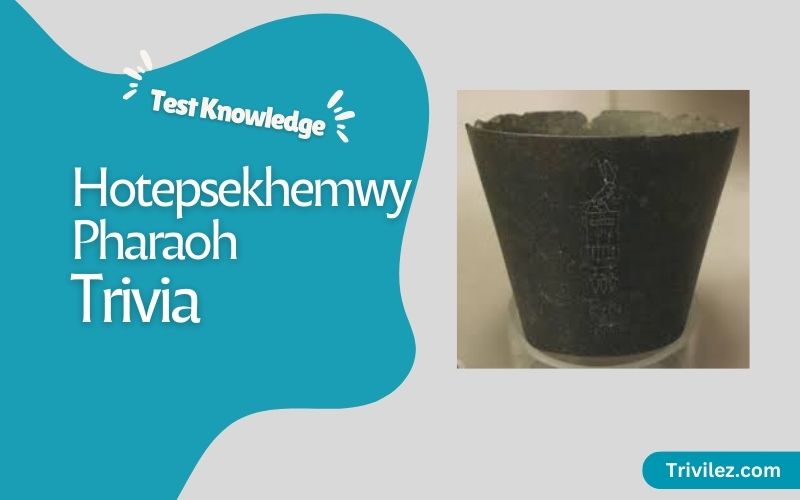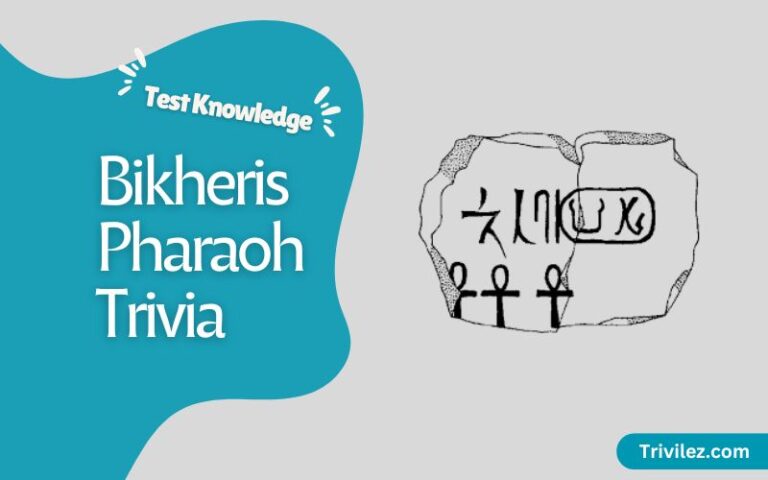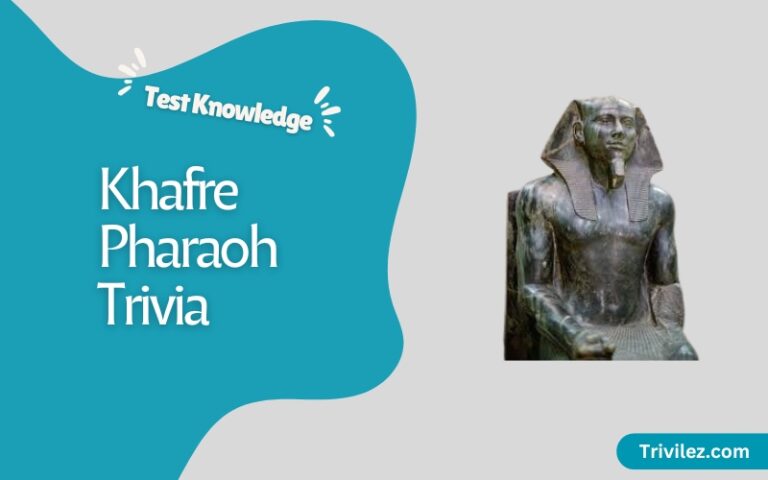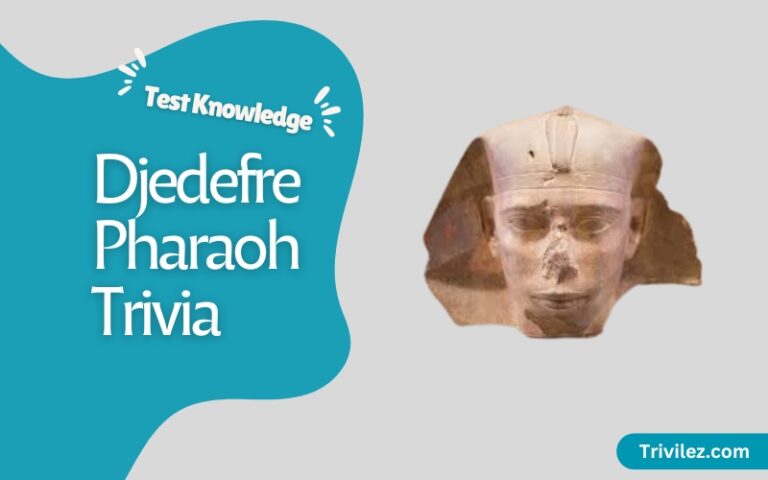Say Hi | contact@trivilez.com
30 Hotepsekhemwy Pharaoh Trivia Questions and Answers

Hotepsekhemwy was the first pharaoh of Egypt’s Second Dynasty, ruling around 2890 BCE. His name, meaning “The Two Powers Are at Peace,” suggests efforts to unify Upper and Lower Egypt after a turbulent transition from the First Dynasty.
Though little is known about his reign, historical records and archaeological findings indicate that he maintained political stability and contributed to religious and architectural advancements. His rule marked the beginning of a new era, setting the foundation for Egypt’s continued development.
30 Hotepsekhemwy Pharaoh Trivia Quiz
1. Who was Hotepsekhemwy?
2. What does the name “Hotepsekhemwy” mean?
3. When did Hotepsekhemwy rule Egypt?
4. Which dynasty did Hotepsekhemwy belong to?
5. Who was the predecessor of Hotepsekhemwy?
6. How is Hotepsekhemwy’s reign known in Egyptian history?
7. Did Hotepsekhemwy build any significant monuments?
8. Where was Hotepsekhemwy’s tomb located?
9. Who succeeded Hotepsekhemwy as pharaoh?
10. What evidence exists about Hotepsekhemwy’s rule?
11. What is unique about Hotepsekhemwy’s reign?
12. How long did Hotepsekhemwy rule?
13. Is there any surviving statue of Hotepsekhemwy?
14. What was the political significance of his name?
15. Did Hotepsekhemwy have any known family members?
16. What script was used during his reign?
17. Which gods were prominent during his rule?
18. Was Hotepsekhemwy mentioned in later Egyptian records?
19. What material evidence links him to Saqqara?
20. What was the main challenge during his reign?
21. What alternative names is Hotepsekhemwy known by in historical records?
22. What significant event is associated with Hotepsekhemwy’s reign according to Manetho?
23. What was the purpose of the “Chapel of the White Crown” built by Hotepsekhemwy?
24. How did Hotepsekhemwy contribute to religious architecture?
25. What does the Nebty name “Sehotep-Nebty” of Hotepsekhemwy signify?
26. What is the significance of the serekh symbol associated with Hotepsekhemwy?
27. How is Hotepsekhemwy’s reign documented in later king lists?
28. What is the meaning of the name “Bedjatau” found in ancient records?
29. What evidence suggests Hotepsekhemwy’s efforts to legitimize his rule?
30. How did Hotepsekhemwy’s reign influence the political landscape of ancient Egypt?
Curious about more legendary Pharaohs? Check out the following Pharaoh trivia blogs for more fascinating facts!
- Narmer Pharaoh Trivia
- Hor-Aha Pharaoh Trivia
- Djer Pharaoh Trivia
- Djet Pharaoh Trivia
- Merneith Trivia
- Den Pharaoh Trivia
- Anedjib Pharaoh Trivia
- Semerkhet Pharaoh Trivia
- Qa’a Pharaoh Trivia
Fascinating Facts About Hotepsekhemwy
- Dynastic Transition: He likely ascended the throne after the death of Qa’a, the last ruler of the First Dynasty, possibly through a peaceful transition.
- Mysterious Burial Site: His tomb remains undiscovered, though some scholars believe it may be located in Saqqara.
- Religious Contributions: He built a temple near Buto for the deity Netjer-Achty and established the Chapel of the White Crown.
- Recorded in King Lists: His name appears as Bedjau in the Abydos King List and Netjerbau in the Saqqara King List.
- Strange Omen: The historian Manetho recorded a catastrophic chasm near Bubastis during his reign, though this remains unverified by archaeology.
Conclusion
Hotepsekhemwy’s rule played a crucial role in stabilizing Egypt after the First Dynasty’s decline. While details of his reign remain limited, his impact on religious structures and political unity is undeniable.
His name’s meaning reflects his efforts to maintain harmony, ensuring a smooth transition into the Second Dynasty. As we continue to uncover more about ancient Egypt, Hotepsekhemwy’s reign remains a fascinating chapter in pharaonic history.








